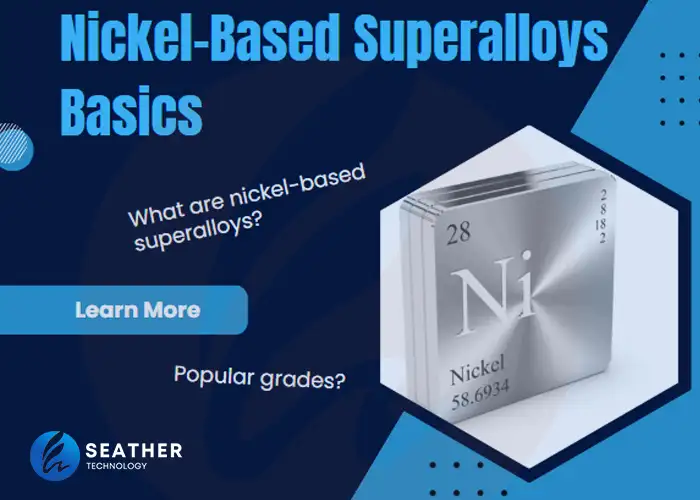Introduction to Nickel Based Superalloys
Nickel based superalloys are a class of high-performance materials renowned for their exceptional strength, corrosion resistance, and ability to withstand high temperatures. These alloys typically contain over 30% nickel, with some compositions reaching over 70%. They are distinguished by their two-phase equilibrium microstructure, consisting of gamma (γ) and gamma-prime (γ’) phases, which are key to their high-temperature strength and resistance to creep deformation.
Components and Composition
The primary solutes in these superalloys are aluminum and/or titanium, often less than 10% in total concentration. This composition results in a unique microstructure that contributes to their remarkable properties. Additional elements like niobium, hafnium, and tantalum may also be included, enhancing various characteristics such as strength and corrosion resistance.
Types and Properties

Nickel-based superalloys come in various grades, each tailored for specific applications. Some common types include Inconel 625, Rene 80, In-713LC, and Nimonic 80A. These alloys exhibit exceptional properties:
- High Strength: Some grades have tensile strengths up to 1125 MPa, surpassing materials like diamond or titanium.
- Heat Resistance: They can withstand temperatures beyond 1200°C, maintaining structural integrity under extreme heat.
- Corrosion Resistance: These alloys naturally form a protective oxide layer, making them resistant to oxidative corrosion.
- Machinability: They offer better weldability and machinability compared to other metals, thanks to their elevated creep resistance.
Manufacturing Process
Nickel-based superalloys are produced in various forms, including powder, wrought, or cast. The manufacturing process involves complex techniques like vacuum induction melting and vacuum arc remelting to achieve desired purity and microstructure. Heat treatment processes like solution annealing and stress relief are crucial in enhancing the alloy’s intrinsic strength.
Industrial Applications
These superalloys find extensive use in industries due to their unique properties:
- Aerospace: Used in engine parts and accessories for aircraft due to excellent heat resistance.
- Power Generation: Ideal for combustion chambers and steam turbines in power plants.
- Nuclear Industry: Employed in reactor cores and control rods, benefiting from their corrosion resistance and strength at high temperatures.
- Marine Applications: Their resistance to seawater corrosion makes them suitable for maritime equipment.
Real-World Examples
- Aeroengine Turbine Blades: Single-crystal blades made from these superalloys exhibit superior performance due to their resistance to creep deformation.
- Turbine Discs: Used in aeroengine discs, these alloys must resist fracture by fatigue, often achieved through powder metallurgy.
- Turbochargers: In turbochargers, they withstand high temperatures and rotational speeds, boosting engine power output.
Challenges and Limitations
Despite their advantages, nickel-based superalloys face challenges like:
- Cost: High manufacturing costs due to complex processing and expensive raw materials.
- Machinability: While better than many metals, machining these superalloys can still be challenging due to their hardness and strength.
- Temperature Sensitivity: Some grades may lose strength at very high temperatures, requiring careful selection for specific applications.
Future Prospects
The future of nickel-based superalloys looks promising, with ongoing research focused on improving their properties and finding cost-effective manufacturing methods. Advances in materials science could lead to alloys with even higher temperature capabilities and better overall performance, expanding their applications in various industries.
In conclusion, nickel-based superalloys represent a pinnacle in materials engineering, offering a combination of properties that are crucial for high-performance applications. Their continued development and improvement will undoubtedly contribute significantly to advancements in aerospace, power generation, and other critical sectors.
Stay ahead with Seather Technology – your ultimate guide in the evolving world of e-cigarettes. Subscribe now!